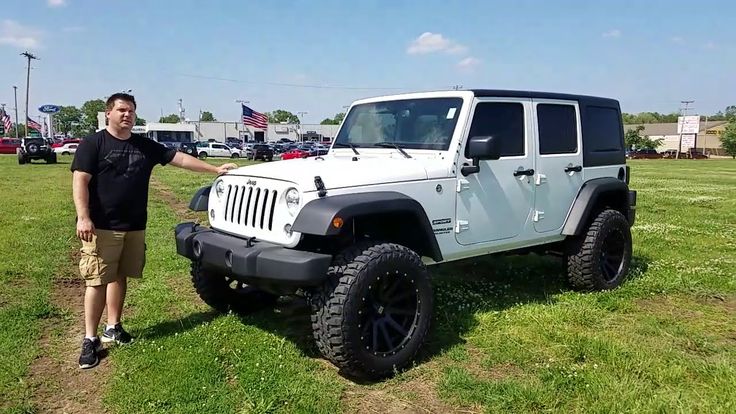Any off-road enthusiast knows that bigger tires are one of the best bang-for-the-buck upgrades to improve ground clearance and off-road capability. Large tires also make your truck, Jeep, or SUV look more aggressive.
35-inch tires are a popular upgrade size. 35s will get your truck an additional inch of axle clearance over 33-inch tires and provide improved traction while wheeling. Upgrading to 35’s is not always easy. A lift and other modifications may be needed to make them fit properly. Keep reading to learn whether or not you will need a suspension lift to put 35s on your rig!
It’s All About ClearanceUnsurprisingly, the main challenge that comes with fitting larger tires on a vehicle is clearance. Additional clearance can be obtained through a lift, negative offset wheels, and other suspension/body modifications.
Clearance is needed vertically and horizontally to ensure the tires don’t rub during turns, going over bumps, or driving straight.
A lift is required on most vehicles to accommodate 35-inch tires. The lift size needed can range from 3.5-6 inches. An exception is the new Ford Bronco, which requires no modification to fit 35s. Some trims even come with them from the factory!
The lift your vehicle needs also depends on whether it has an independent front suspension or a solid front axle.
Fender and Wheel Well ClearanceYou will likely need to modify the factory fenders and wheel wells to clear larger tires, especially to achieve full suspension compression. To get the optimal clearance you may need to remove plastic wheel arches and trim the fenders with an angle grinder. These modifications are more common on vehicles with independent front suspension.
Upper Control ArmsRunning 35s can cause the tires to rub on the upper control arms. There are a few things you can do to fix this problem.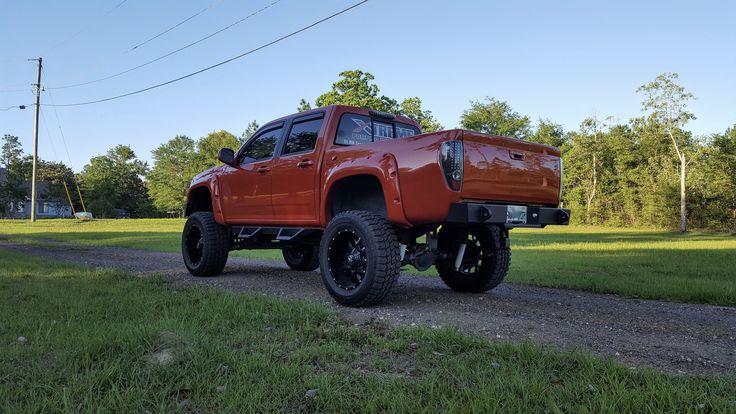
Wheel spacers push your wheels out and can reduce UCA rub. Spacers are a cheap option for addressing UCA rub but have some safety risks.
Negative Wheel OffsetRunning a wheel with a negative offset can accomplish the same thing as wheel spacers. Unfortunately, this option requires buying a new set of wheels which can get very expensive quickly.
Upgraded Upper Control ArmsUpgrading your upper control arms to an aftermarket unit can eliminate clearance issues. Most aftermarket UCA’s designed for off-road use will easily accommodate 35-inch tires.
Crash Bar and Pinch WeldsSafety features like the crash bar can cause clearance issues on modern vehicles and may need to be relocated. The pinch weld in the wheel well can also cause problems. Grinding or hammering it down can help.
Other things to considerThe modifications needed to fit 35-inch tires can be extensive, but it doesn’t always stop at suspension and bodywork.
Depending on your vehicle, you may need to consider re-gearing your differential to better accommodate the larger tire size. Otherwise, you may experience sluggish acceleration and poor on-road performance.
Speedometer CalibrationLarger tires will throw off how your speedometer reads. You will need to bring your vehicle to a dealership or shop with the software required to reprogram it.
Get Your Rig Riding on 35s at Scott’s U-Save!If you want to take the plunge and upgrade your truck, Jeep, or SUV to some 35-inch tires, come visit Scott’s U-Save! Determining what you need to fit larger tires can be difficult, but our suspension and wheel experts will guide you through the entire process and help you achieve the goals you have for your rig. We have locations in Steger and New Lenox, Illinois as well as Schererville, Indiana. Give us a call or schedule an appointment online today!
Fitting 35” tires to your truck is no longer a mystery or guessing game. More and more 4WD owners have successfully pulled off this upgrade, so we know what is expected if you want to join the 35” club. There are quite a few facts you need to be aware of so hopefully, this article will give you a better idea of what’s involved.
More and more 4WD owners have successfully pulled off this upgrade, so we know what is expected if you want to join the 35” club. There are quite a few facts you need to be aware of so hopefully, this article will give you a better idea of what’s involved.
Fitting 35” tires to your truck requires a suspension upgrade of 3.5”-6” depending on the vehicle and if it’s an IFS or SFA front suspension. Other requirements for 35” tires could include:
There’s no doubt that 35” tires will totally transform the look and performance of your vehicle. There are, however, a few pros and cons when doing this upgrade, which we’ll look at in more detail next.
Table of Contents
There are many benefits to fitting 35” tires such as improved looks, improved aesthetics, and they just look so SWEET, lol. As an added benefit, you get increased ground clearance, more surface area contact which equates to better traction both on and off-road. Being 35” tires, they also have thicker sidewalls which allow you to carry heavier loads and are more durable than smaller, thinner tires with better puncture resistance.
As an added benefit, you get increased ground clearance, more surface area contact which equates to better traction both on and off-road. Being 35” tires, they also have thicker sidewalls which allow you to carry heavier loads and are more durable than smaller, thinner tires with better puncture resistance.
Unfortunately, it’s not all roses, and there is a downside as in the case with most upgrades. 35” tires are heavy, Period. This means the unsprung weight is increased, which means a decrease in MPG’s. Yep, you’ll pay more at the pumps!
35”s in most cases with IFS trucks, requires quite a bit of trimming, cutting, and grinding away plastic fender liners, body mounts, and pounding away to create more clearance inside the wheel wells. In some instances, you’ll have to do a full BMC (Body Mount Chop) as in the case of the 3rd Gen Tacoma’s, which you can read about here. This almost always happens when running 33” tires, so you can expect it to happen with 35’s. A cab mount chop will need to be performed to eliminate this or you can opt for full relocation kits. Aftermarket cab mount relocation kits are your best option since they will allow for the most clearance.
A cab mount chop will need to be performed to eliminate this or you can opt for full relocation kits. Aftermarket cab mount relocation kits are your best option since they will allow for the most clearance.
In most cases, at full compression, the tires rub along the interior perimeter and at the top during full compression. Tires will rub at the maximum limits of where the truck’s body runs within the wheel well. Factory flares will require trimming along the entire length of the wheel well to avoid rubbing, so get familiar with your angle grinder. The obvious move here is to remove the fender liner, although not practical if you are concerned about dirt collecting inside the wheel well.
In many cases, with modern vehicles, there are safety features built into the bumpers, so you’ll need to do front crash bar removals as in the case of the Ford Rangers. Then there’s also the pinch weld, which will need to be grinded and pounded flat. This is a welded piece of the body that protrudes into the wheel well and interferes with the tires. This usually happens during compression on all oversized tires.
This is a welded piece of the body that protrudes into the wheel well and interferes with the tires. This usually happens during compression on all oversized tires.
But in all cases, without a doubt, you’ll need to spend some cash on an aftermarket suspension, which means increased costs on this project. In some instances, even a body lift or leveling kit will be required, it all varies from vehicle to vehicle and factors such as, how big the factory arches are, the shape of the arches, and clearance inside the wheel wells.
Click here for a full list of 3” suspension components on Amazon
Other cons to fitting 35’s will include more strain on your drivetrain system, which in many cases means a decrease in performance and the need to re-gear your diffs to try and salvage some power and MPGs.
The factory standard gear ratios of your differentials will result in your truck feeling slower on-road and more sluggish off-road.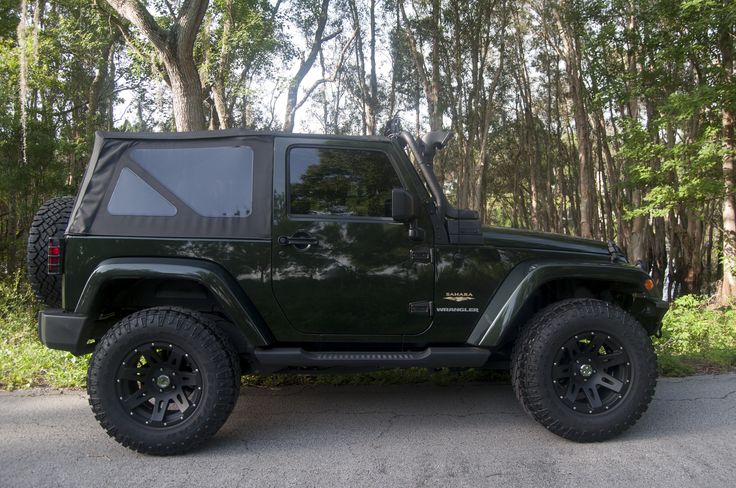 The only way to minimize this effect is to modify the diff gear ratios.
The only way to minimize this effect is to modify the diff gear ratios.
In the case of a 3rd Gen Tacoma, the stock gears are quite long and rather poorly set up in standard form, so you will need to bump it up to 529. This is the ideal ratio to get the gearing and RPM back, or as close to the factory feeling again.
Aftermarket UCA’s
Then there’s UCA’s that will need upgrading since the wider, fatter 35’s will require more UCA clearance in order to fit properly. The cheapest and quickest solution to cure this is to add a 1” wheel spacer. Alternatively, negative offset wheels with more backspacing are required when fitting 35s, especially if the spacers are not enough. Aftermarket UCAs are designed to take larger tires and will provide enough clearance to fit 35s. UCAS will also help with improving the caster angle. Combine this with an aftermarket rim with a more negative offset and you should be good.
If you already have a high clearance front bumper, you won’t have to worry about scrubbing at full lock.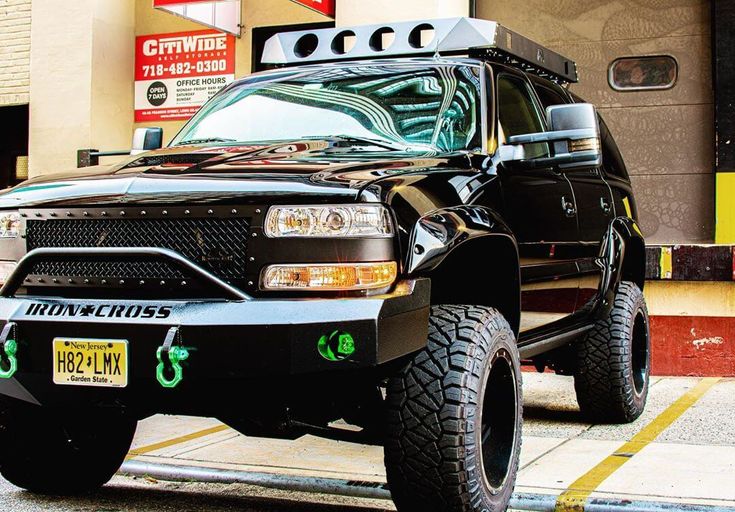 If not, you’ll either have to cut and trim and pound your beloved truck or invest in an aftermarket front bumper, since most aftermarket bumpers can easily run 35s without further modifications since they are designed with larger tires in mind.
If not, you’ll either have to cut and trim and pound your beloved truck or invest in an aftermarket front bumper, since most aftermarket bumpers can easily run 35s without further modifications since they are designed with larger tires in mind.
Fitting 35” tires do not require a crazy amount of modifications. It starts with an aftermarket suspension with the minimum lift of 2.5” inches, and 3 inches is recommended for off-road. You will require a lift, negative offset rims and you’ll need to do some other modifications, which you can read in more detail here.
On the rear, it’s a straightforward fit with no clearance issues. You can get full tuck on the rear without any hassles. You can trim the wheel arch for improved clearance, however, you will lose your wheel arch liners.
Also, you need to remember the front wheels don’t only move left and right when turning, but there’s also some forward and backward movement. This is why you get scrubbing at full lock when turning and why it’s necessary to do CMC’s and trimming of the pinch weld.
This is why you get scrubbing at full lock when turning and why it’s necessary to do CMC’s and trimming of the pinch weld.
When upgrading to 25’s on a Jeep Wrangler you will need a minimum lift of 2.5 inches for decent clearance or a 3.5-inch lift to retain maximum articulation off-road. The Wrangler’s suspension geometry will be thrown out with such a big lift and you’ll then need to rectify it by installing aftermarket front and rear track bars and at least upper or lower front control arms to realign the front axle under the Jeep. Your springs, sway bar links and brake lines will all need to be modified to accommodate the bigger lift.
There are claims that you can run 35s with only 4” of lift, however, there will be a fair amount of trimming involved. When lifting a Sierra/Silverado you ideally want to go for a 6” lift. This will avoid unnecessary trimming and cutting.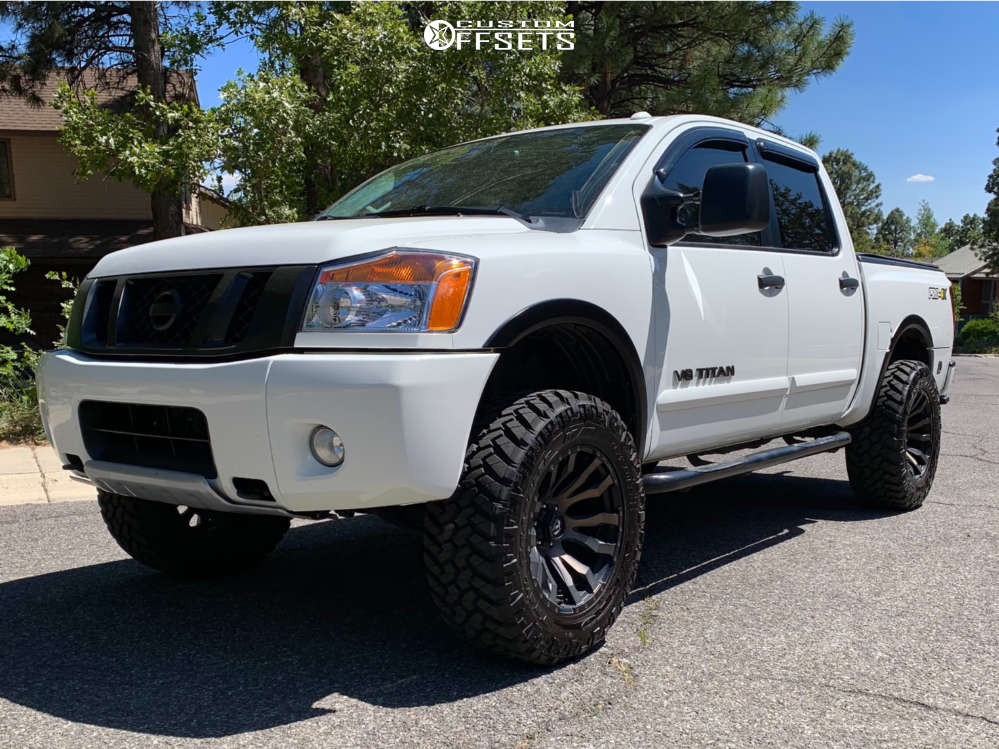 The wheel offset also plays a role and how wide they are and how much backspacing they have. For example, if you are running 325/60r20 with a 6” lift, you’ll still need to trim the front air dam for them to not rub. You would definitely need at least 4 inches to run 35×12.5 tires and you would need a 9-inch wide rim with around 0 offsets for this to work. The wider the rims, i.e. 12 wide rims, will require a 6-inch lift as the offset will be around -44 which will push the tires out a lot.
The wheel offset also plays a role and how wide they are and how much backspacing they have. For example, if you are running 325/60r20 with a 6” lift, you’ll still need to trim the front air dam for them to not rub. You would definitely need at least 4 inches to run 35×12.5 tires and you would need a 9-inch wide rim with around 0 offsets for this to work. The wider the rims, i.e. 12 wide rims, will require a 6-inch lift as the offset will be around -44 which will push the tires out a lot.
Most Rangers I’ve seen online are running 35’s on a 6-inch lift with minimal cutting and trimming. I think you’ll be doing a lot of trimming, trying to fit 35’s under these trucks with only a level.
However, to successfully run 35’s on a Ford Ranger requires all of the below:
Leonid Popov, . Photo: Militem
It’s easy to recognize Jeeps and Rams here, which received new bumpers, a radiator grille, wheels, carbon fiber fender extensions, a suspension lift, a new exhaust and 30 m² of genuine leather with a kilometer of stitching.
The solidity of American SUVs and Italian design, technology from the USA and Italian elegance are called upon to bring together the Italian brand Militem. The word itself comes from Latin, and can be translated as "knight". The first sample of Militem products was shown back in 2019-m. Now, having acquired a network of dealers in Italy and concluding the first agreement with a partner abroad (in Monte Carlo), Militem has announced its readiness to conquer Europe. Moreover, the company is negotiating with potential dealers in the Middle East, the US (California), Japan and Russia.
The suspension of the Ferox SUV has been raised by five centimeters and fitted with new shock absorbers.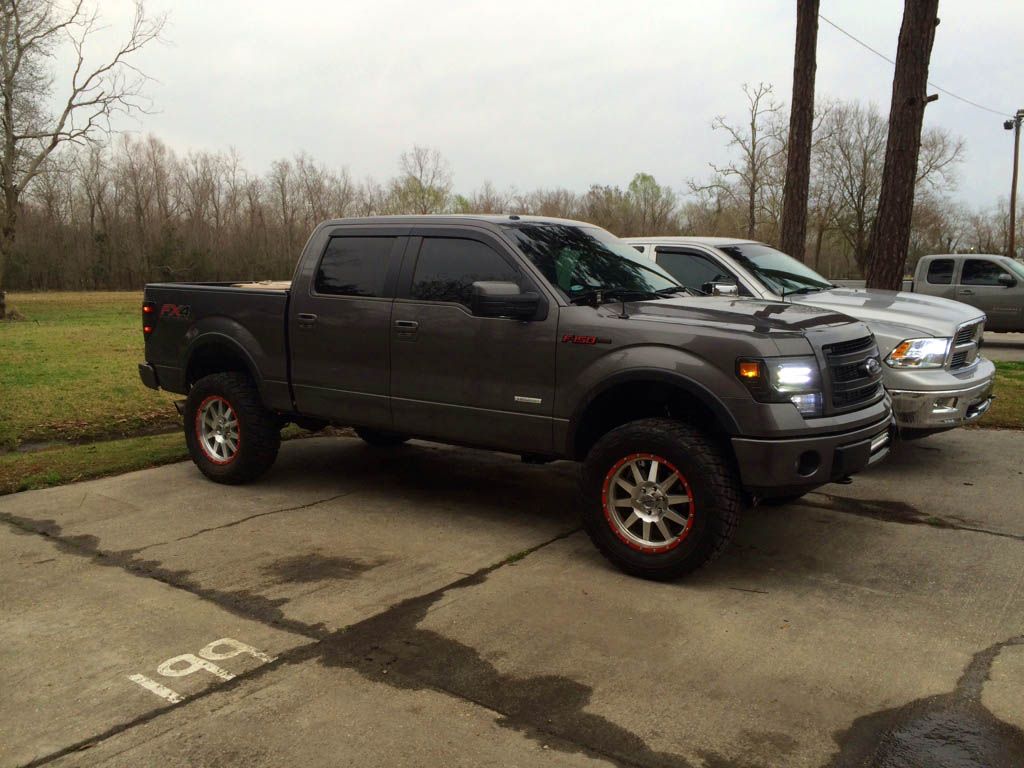 The car received black alloy wheels from Militem with a diameter of 20 inches, with off-road 35-inch tires. Power soft top available.
The car received black alloy wheels from Militem with a diameter of 20 inches, with off-road 35-inch tires. Power soft top available.
The brand's firstborn is Militem Ferox. This is a Jeep Wrangler JL redesigned by the Italians (in Unlimited, Sahara, Rubicon versions). The all-wheel drive model can be equipped with a 2.0 turbo engine (272 hp, 400 N•m) or aspirated V6 3.6 (285 hp, 260 N•m) to choose from. Both engines are Militem prepared and mated to an eight-speed automatic.
The leather-wrapped interior comes in fourteen colors to choose from. If desired, the leather can be replaced with Alcantara or Dinamica microfiber.
The second car in the line - Militem Hero - is the result of tuning the Jeep Renegade crossover (Limited or Trailhawk). Under the hood can be a 1.3 turbo four (180 or 200 forces, 270 N•m), as well as a 2.0 diesel (170 or 190 “horses”, 350 N•m). Both are paired with a nine-speed automatic and all-wheel drive. As in the case of the Wrangler, Renegade is supposed to have a leather upholstery, a suspension lift (38 or 50 mm), new rims with All-Terrain tires (265/50 R20).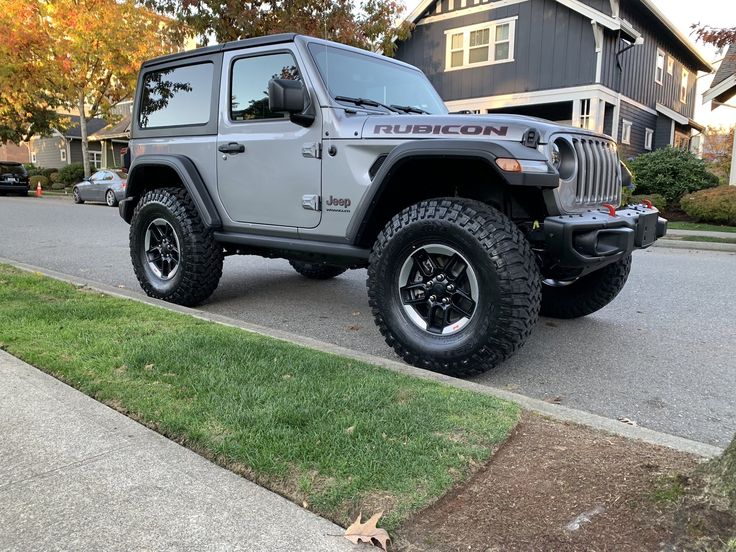
The Hero's exterior styling package includes redesigned bumpers, a vented hood with slots, and inside you can find nappa or Alcantara in a variety of hand-stitched options.
At the top of the range is the Militem Magnum, a more luxurious version of the Ram 1500 Laramie Sport pickup. It is driven by a V8 5.7 Hemi engine with an MDS half-cylinder deactivation system and a return of 401 forces (556 N•m). It can also use E85 bioethanol, and on request, the Italians will supply a liquefied gas supply system from Prins (the engine output rating is preserved). All-wheel drive with an eight-band "automatic" completes the set.
TheMagnum features a double panoramic roof, detachable towbar, LED headlights and air suspension with height adjustment, a remotely operated cargo cover, suspension lift (up to 13 cm) and 35-inch off-road tires.
The brand appeals to managers and entrepreneurs aged 35 to 65 who want to stand out in the crowd. The Italians believe that the Militem brand could be as prestigious as Maserati or Bentley, and in the tuning world become as famous as Brabus, ABT and Alpina. Militem Founder and CEO Hermes Kavarzan says: “Our goal is to fulfill the specific wishes of our customers by responding to the demands of the automotive market with technical, quality and creativity.”
Militem Founder and CEO Hermes Kavarzan says: “Our goal is to fulfill the specific wishes of our customers by responding to the demands of the automotive market with technical, quality and creativity.”
Comments
Share
Like
Tweet
Send
© 2005–2023 Drive LLC, media registration certificate No. ФС77-69924 16+
Full version of the site
Tu-u-undra-a-a-a.. ...........Word What a sound! What a sound! The Tundra has never been created for movement along the area that gave it its name, but it is consonant with the car. I don’t know a single a man whom the Tundra left indifferent.
And what are the attempts of the Americans to wash the Tundra in every possible way through Yu-Tub! And then her zhola shakes on bumps and the body then warps and does not hold moose dough .... I suppose the developers of the Tundra whinnied before colic, looking at these attempts by the Yankees to save their market from invading them Tundra. Winner.
Winner.
Good, infection. Big. Beautiful. Powerful. Fast.
Respect. My next car will be Tundra.
I know only one drawback of the Tundra - his (or her, but I prefer I like to use the Tundra in the masculine gender) size. But it's not city compact. This is a truck. Comfortable and durable. Passable and economical. The size will also be tolerated. He's justified. Each purchased centimeter of the Tundra is thought out and in demand by the task he is solving.
It's just easier to invade the design of machines. Well, like pickups Mazdaford row, the base of which lived its life without changes a quarter of a century and the manufacturer only changes the peel, believing that the main consumer of their product is absolutely illiterate technically and beautifully curved rear light and grille in trendy chrome is directly associated with the technical excellence of the chosen car. But in fact, the buyer only needs an inexpensive hardy truck.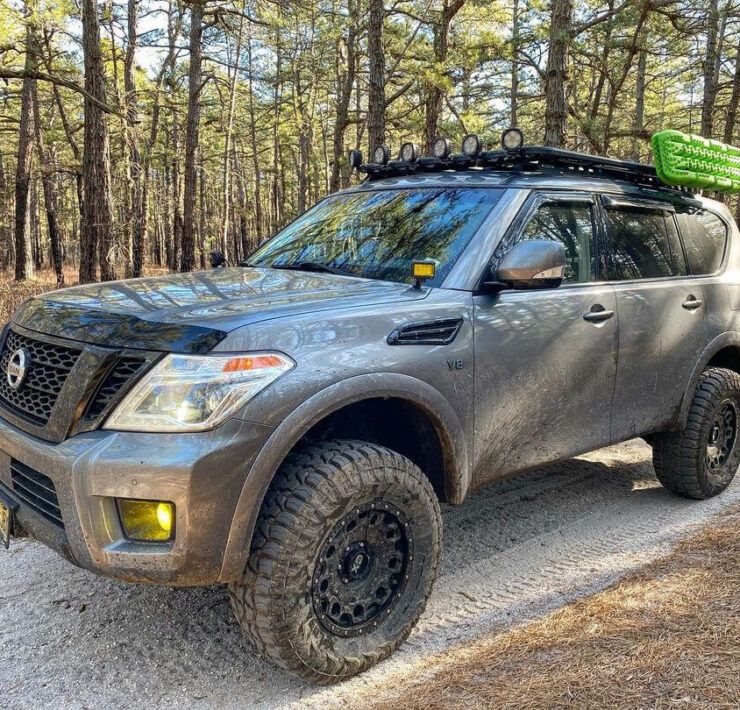 Passable and strong. And only. The design is already outdated, changed from a dozen bodies, from twenty motors. Accordingly, tuning such a piece of iron is a thankful and easy task. IN Either way it will be better than stock. Well, almost any.
Passable and strong. And only. The design is already outdated, changed from a dozen bodies, from twenty motors. Accordingly, tuning such a piece of iron is a thankful and easy task. IN Either way it will be better than stock. Well, almost any.
A lately, cars have become increasingly common in our hands others. A lot of design soul has been invested in them and the very first development. The people, despite all the tricks of the government, managed little to survive, but also began to smoothly grow rich. Live, bastard .... And cars for his little hunting and fishing needs, he began to buy correct. Not so much expensive as good. We recently made Navaru, now Tundra. However, the trend, I tell you…………
So, Tundra.
Fundamentally the approach to the Tundra and Navara preceding it is the same. Actually and there are not many structural differences. As we have already mentioned, Toyota formulated, and behind it in single file and the whole automotive world, the optimal construction.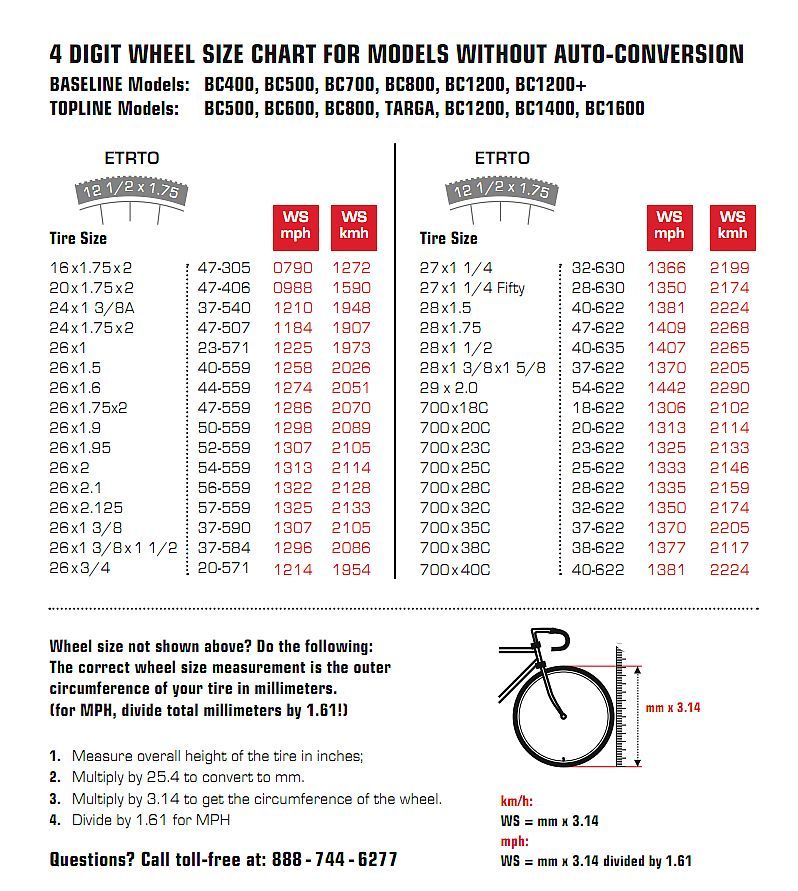 This refers to such fundamental nodes as the arrangement shock absorbers, elastic element type, bridge placement, frame shape, design of body pillows, kinematic schemes of suspension operation. Only a very superficial glance will not liken the suspensions of Navara, L-200, Sequoia, Tundra, Hilux and other correct cars Toyota Prado 120. She was the first in such a structure. It has a design idea ran into the futility of further improvement and even Toyota, releasing her flagship Landcruiser 200 did not invent anything, because nowhere and there is no need, but simply scaled the 120th prado% by 10 and produced another masterpiece with an index of 200 (or Lexus 570, as who like it). So let's try not to spoil it...
This refers to such fundamental nodes as the arrangement shock absorbers, elastic element type, bridge placement, frame shape, design of body pillows, kinematic schemes of suspension operation. Only a very superficial glance will not liken the suspensions of Navara, L-200, Sequoia, Tundra, Hilux and other correct cars Toyota Prado 120. She was the first in such a structure. It has a design idea ran into the futility of further improvement and even Toyota, releasing her flagship Landcruiser 200 did not invent anything, because nowhere and there is no need, but simply scaled the 120th prado% by 10 and produced another masterpiece with an index of 200 (or Lexus 570, as who like it). So let's try not to spoil it...
Proceeding from the thesis that we have repeatedly postulated about the futility of attempts increase the cross-country ability of a car with independent suspension by extrusion front levers down with monstrous springs and, accordingly a decrease in the amplitude of the front suspensions, understanding, however, the need to increase ground clearance and exit-entry angles, confine ourselves to setting the maximum wheel. Empirically calculated us that the maximum possible wheel installed on the Tundra - 35x12.5 inches. There is some conflict between the width of the wheel and the upper lever parts. You can decide or install spacers minimally possible size (in our case 50mm), or by installing a disk, different from the drain by 30mm minus.
Empirically calculated us that the maximum possible wheel installed on the Tundra - 35x12.5 inches. There is some conflict between the width of the wheel and the upper lever parts. You can decide or install spacers minimally possible size (in our case 50mm), or by installing a disk, different from the drain by 30mm minus.
Additionally, it is required to raise the body and cab of the pickup truck by 50mm. By already repeatedly worked out scheme on other machines, we execute it with the help of custom-made brackets that replicate the original fit cabin silent blocks.
Strong we recommend to refrain from collective farm tuning in the form of caprolon spacers under the pillows. The design is changing and only in my memory we fixed three cars with flying forward bodies torn off the pillows as a result of minor collisions. All of them were on caprolon and long bolted.Our cushion design is visible from the photo.Only the first pillows under the TV are made in the form of spacers.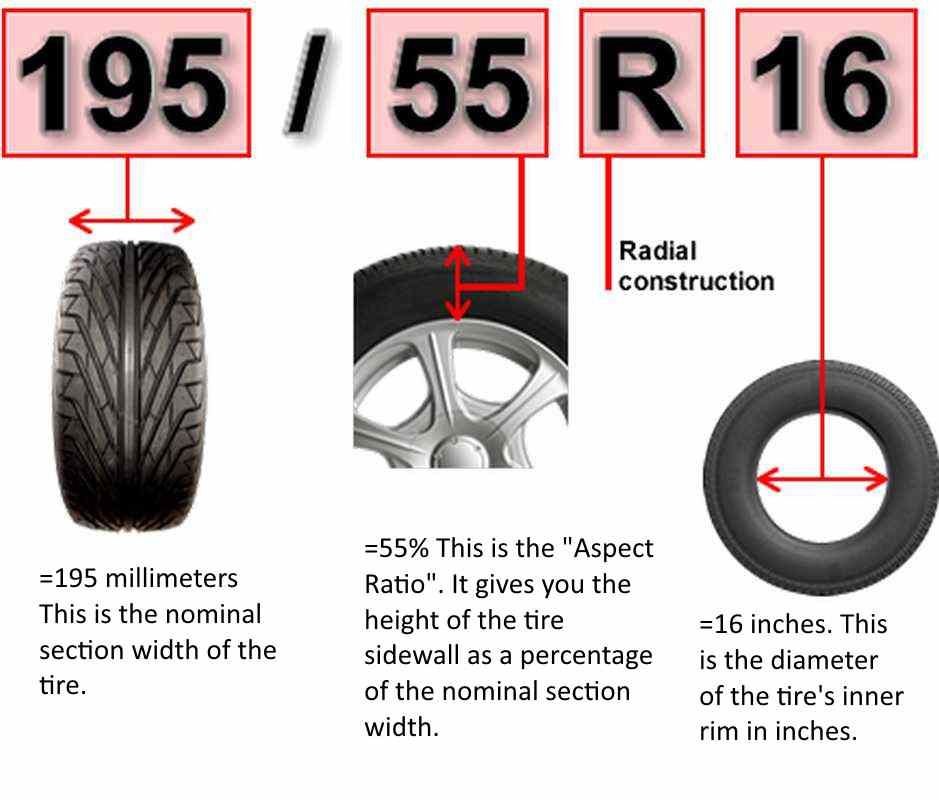
Under the cargo body, in the wheel-arched part we make supports, repeating the frame and not allowing the body to sag when heavily loaded.
In connection with the forced expansion of the track of the machine, we use wheel arch extensions (fenders).
Because a car with independent suspension remains low-seated and, unlike bridge SUVs when overcoming obstacles has a constant contact with the ground with the entire bottom, we will pay special attention to the protection of the bottom. There are many samples of such products on the market. In the main to their mass, they replicate the same error, which is unacceptable when trying to call your product quality or professional. A because we position ourselves as the right ones manufacturers, consider this aspect.
Bolts protection fasteners. Like a trifle. Just a fastener designed to hold sheets of protection against failure when overcoming certain ledges. Whether earthen whether stone…….. Like everything. The defense itself must be strong, aesthetic, as light as possible. All. All ? no she has to be DISMANTLABLE. Is it really obvious? Now let's try to imagine what will turn into a simple exercise to dismantle the protection (Maintain aggregates, fix something there, just shake off the dirt and moss with hay, a cluster of which next to the muffler burned more than one vehicle prepared by amateurs) A now close your eyes and imagine what the hat turns into bolt, standardly fastening standard protection when moving a three-ton cars on the belly on stones or pebbles. And she turns into shapeless comma, imprinted in metal, which cannot be taken by any no tool. And now imagine yourself anywhere in the fields with standard set of keys. And let's mourn. And therefore, without putting yourself tasks to find fault with samples of colleagues, nevertheless, let's say that their products are not professional and acceptable for use by summer residents and crews transporting their thermoses, barbecues and sandwiches to the nearest career or reservoir in the back of his pickup truck.
Whether earthen whether stone…….. Like everything. The defense itself must be strong, aesthetic, as light as possible. All. All ? no she has to be DISMANTLABLE. Is it really obvious? Now let's try to imagine what will turn into a simple exercise to dismantle the protection (Maintain aggregates, fix something there, just shake off the dirt and moss with hay, a cluster of which next to the muffler burned more than one vehicle prepared by amateurs) A now close your eyes and imagine what the hat turns into bolt, standardly fastening standard protection when moving a three-ton cars on the belly on stones or pebbles. And she turns into shapeless comma, imprinted in metal, which cannot be taken by any no tool. And now imagine yourself anywhere in the fields with standard set of keys. And let's mourn. And therefore, without putting yourself tasks to find fault with samples of colleagues, nevertheless, let's say that their products are not professional and acceptable for use by summer residents and crews transporting their thermoses, barbecues and sandwiches to the nearest career or reservoir in the back of his pickup truck. But if you still , they were about to move off the asphalt and protecting the bottom of your car is not a tribute traditions but a real necessity, do not use consumer goods. Well it . Look for people who know for sure that: THE DEVIL LIVES IN SMALL THINGS. People who not only screw protections to your cars, but also in due to their professional duties, they are sometimes unscrewed. Of people , ready not only to prepare your car for expeditions , dazzled in front of you by the gloss of magazines with eminent manufacturers TYUNINHA, but also ready to meet you from the expedition and listen to what still missed it. I don't mean just us like us set , I mean professional workshops in general. In the photo you can see the development of our thought. First, we welded on the reverse side aluminum nickels to drown the bolt heads into the protection body, then developed special stainless steel washers that not only cover the bolts , but also allow the protection to maintain some sufficient mobility relative to the frame when twisting it.
But if you still , they were about to move off the asphalt and protecting the bottom of your car is not a tribute traditions but a real necessity, do not use consumer goods. Well it . Look for people who know for sure that: THE DEVIL LIVES IN SMALL THINGS. People who not only screw protections to your cars, but also in due to their professional duties, they are sometimes unscrewed. Of people , ready not only to prepare your car for expeditions , dazzled in front of you by the gloss of magazines with eminent manufacturers TYUNINHA, but also ready to meet you from the expedition and listen to what still missed it. I don't mean just us like us set , I mean professional workshops in general. In the photo you can see the development of our thought. First, we welded on the reverse side aluminum nickels to drown the bolt heads into the protection body, then developed special stainless steel washers that not only cover the bolts , but also allow the protection to maintain some sufficient mobility relative to the frame when twisting it. We grow, however.
We grow, however.
All protections are made of 8mm AMG-5m aluminum. Smaller thicknesses are weak and deform, larger roads. Optimum.
Car lifted with wheels, protected from below, installed on one bumpers Rodarmore front and rear (by the way, such figovenkoe bumpers provided by the customer. In addition to the weight of under 80 kg each, nothing not remarkable. And the fact that all 80 kg hung from the Tundra on the original the bolts of the amplifier of the standard bumper, well, not in any gate climbs, we don’t build like that. This is rudeness.), installed winches in front and behind. In another car, winches were mounted in standard bumpers.
If there were no special problems from the front, but from the back I had to seriously make war. It turned out to be very difficult to unfasten it humanly. But coped. Mounting kit:
A strange box with semi-circular holes is a cable walker.
The photo shows air bellows installed in support of the springs.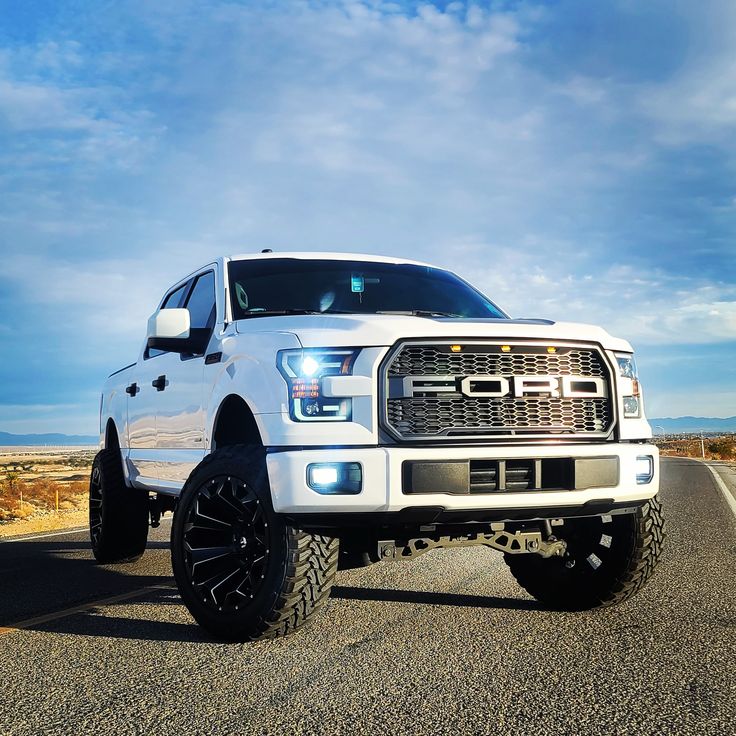
Neat little key.
Thresholds have been set.
Along the way, by raising the body by 5 cm, it became possible to increase the capacity of the fuel tank to 210 liters. Fulfilled this too.
How you see, nothing American was used in the preparation, no superduper suspensions and levers, no super springs and springs. This leaves your car repairable and very close to the original. She definitely lost a little in stability on the track and big speeds, after all, we slightly raised the center of gravity, but we did it minimum.
From desirable, in our opinion, the continuation of preparation - removal spare wheel from under the bottom to the rear bumper. This is not a tribute to tradition, this is an understanding of the impossibility of removing the spare tire when a wheel breaks in rut or swamp. The car will lie on the wheel with its entire mass and will have to dig a trench a meter wide to extract it from there. And on her the right place to put the rear winch. Or a water tank, or fuel tank. Or a gas cylinder. Tundra motors, which is 5.7, which is 4.7, they are perfectly converted to gas and digest it very calmly.
And on her the right place to put the rear winch. Or a water tank, or fuel tank. Or a gas cylinder. Tundra motors, which is 5.7, which is 4.7, they are perfectly converted to gas and digest it very calmly.
By the use of winches, our recommendation will be as follows. And back and forth correctly install winches with a pulling force of at least 12,000 pounds . With obligatory laying of the power cable from the battery to the winch both plus and minus. It is desirable to install a second battery. It is necessary to be aware that, just like Navara, Tundra becomes a serious SUV with a wheel that way at 40-42 inches diameter, and with a smaller use of the winch will be quite frequent, and according to this must be decided correctly. How about installation , and operation. We strongly recommend using a winch (even if 12000) through the . Understanding the simple truth - DC electric motors with permanent magnets develop speed proportional to winding resistance will avoid you reloading winches when using the block.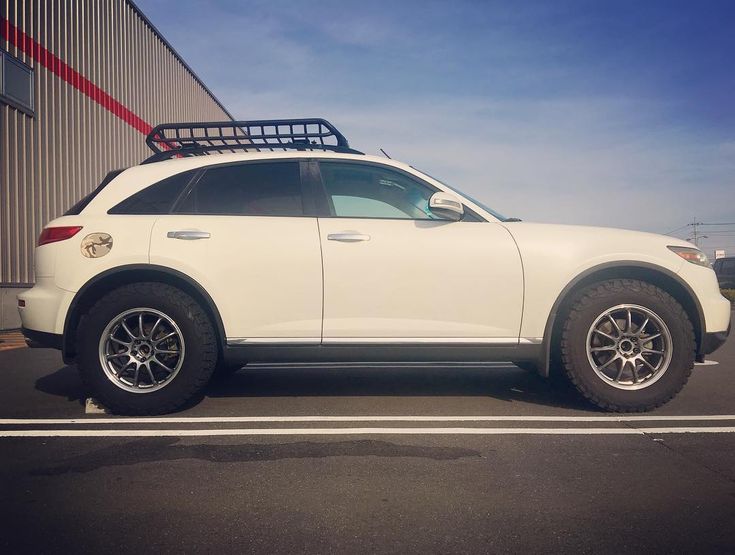 Travel speed (running) will not become smaller when using the block, but the mechanism and the electrical part of the winch will experience half the loads.
Travel speed (running) will not become smaller when using the block, but the mechanism and the electrical part of the winch will experience half the loads.
Today we have mastered the production of bumpers for the Tundra in a variety of versions. With and without winches. But there are no photos of them. So it happened.
I would also like to warn the owners against the use of American front suspension lift solutions. Their standard solution is to lower the ends of the levers and tilt the front gearbox forward. Full idiocy. The input bearing of the front gearbox GP sits on a hungry oil ration and just burns out. And since dope in the Tundra with excess, excellent sound insulation, the owner notices trouble only when already in the cabin it smells of burnt oil and the car stops driving because the gearbox is jammed. Sometimes the drive breaks on the move. Of the four installed thus, three sets have already been changed to the original, returning everything back, I don’t know about another car, it disappeared from the field of view.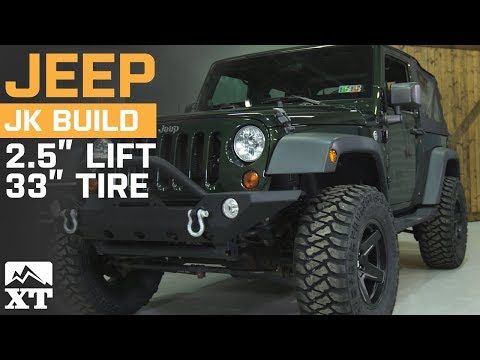
We strongly recommend changing the transfer case to FULL-TIME. It's easy to get one from the 570th Lexus, the installation is not complicated and can be done in any medium workshop. The same is not true for electrics difficult, it is necessary to block the servo of connecting the half shaft front axle in the ON position and understand that the FWD command now corresponds to a differential lock. In our latitudes with a long in winter, the feeling of riding on a full-time tundra is just fabulous. Yes, and in the summer to realize a monstrous power under the hood at full time becomes possible. It’s kind of sad to grind backwards on the desks time.
B conclusion, I would like to draw the attention of the owners of the Tundra to everything one point of scheduled maintenance : wheel bearings front wheels of SUVs of Toyota series 120, 200, Sequoia and Tundra have poor protection against ingress of moisture and dirt. Let's leave it at manufacturer's conscience.